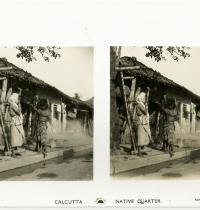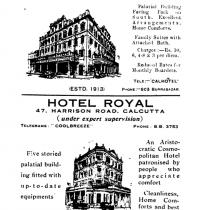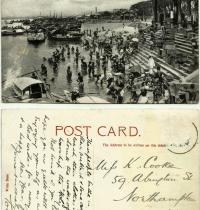Sujaan Mukherjee
Grant Period: Over one year
Sujaan Mukherjee is a young researcher whose interest lies in the fields of urban studies and the arts, with Kolkata as his focus. Currently Sujaan is working on a project called Envisioning the Indian City: Spaces of Encounter that looks at city spaces from multi-disciplinary points of view, and for this he is principally studying the bazaars of Calcutta- their history, growth and the ‘production of their spaces’. He is also involved on a study of the Jewish community in Calcutta.
For the CSSSC Fellowship, Sujaan will work on the idea of ‘Calcutta as a developing tourist spot’ and the birth of tourism in Calcutta. He will look at the many ways in which Calcutta has been ‘constructed’ to attract the tourist, beginning with the painters of the ‘picturesque movement’, through the first days of photography, down to the early days of the digital domain. ‘Historically, the development of tourism followed the rise of the eye as the most privileged sense during the enlightenment. ‘Sites’ became ‘sights’ when they were no longer used but looked at. Wild or fertile nature became landscape that was picturesque or dull. Photography started to accompany and shape tourism right from its invention when guidebooks and package tours were invented’, writes Sujaan in his proposal. He will explore the ways in which the city was commodified and represented by and for ‘the outsider’. He will also bring to the fore, one-off events that brought large groups of people into the city such as the Calcutta International Exhibition or the Congress Exhibitions and the strategies that were used to attract these visitors. Thus Sujaan will consider tourism both as an industry and cultural activity.
To explore the idea of tourism as industry, Sujaan will study the various kinds of artifacts that reflect the city’s relationship with its tourists/viewers, like paintings and photographs made/taken by tourists; the imagery in tourist brochures; guidebooks written in English and Bangla; hotel advertisements down the ages; posters advertising the city and its various attractions; post-cards and maps.
Sujaan’s research will also involve looking at more critical questions, for example, the construction of the ‘tourist gaze’ and more specifically, Calcutta’s relationship with tourism and spectatorship; the use of different technologies and the effect they have on ways of viewing the city; the manner in which an ‘insider’s’ views of the city are influenced by that of an ’outsider’s gaze’; and the manipulative power of advertising on the tourism industry.
The outcome, according to Sujaan, could take various forms such as: a curated guided tour of an exhibition showcasing the history of tourism in Calcutta and how it has been represented by and for the ‘outsider’; a guidebook that could chart this history with illustrative examples, both textual and visual; and/or a digital map that represents the different histories of Calcutta’s heritage.
This fellowship was made possible with support from Voltas Limited.




